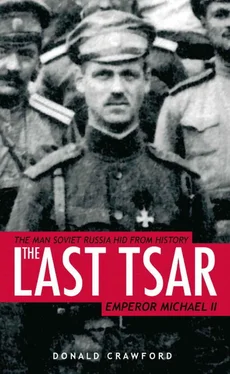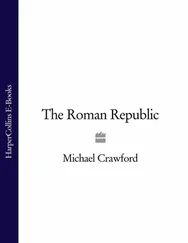Certainly, the Russian Telegraph Agency realised who she was for it reported her crossing, saying that ‘Brasova was greeted with great honour by the German local authorities…She was presented with an officer’s carriage for her journey to Kiev’. 39Reading that must have been a bitter moment in Gorokhovaya Street.
By then the Germans in Kiev were busy on the next part of their plan to make Michael even more grateful to them for their help: to send Natasha through Germany to be reunited with her eight-year-old son George in Denmark and bring him back. On October 21 the anxious message to Berlin was that ‘as we are losing considerable ground with the monarchists…permitting the journey might be a suitable way to place the monarchic circles under an obligation to us. The precondition, though, would be that a political influencing of the Copenhagen court by the countess to our disadvantage is not to be feared.’ 40Natasha was not to be rude about the Germans.
King Christian X of Denmark was happy to extend an invitation to Natasha, though he raised his eyebrows when a subsequent request came into Copenhagen for permission to bring her daughter, Princess Vyazemskaya and two other companions. He agreed but later ‘he did comment to the minister that he had not expected that she would appear with so many companions’. 41Berlin signalled its approval for the journey on October 30, the quid pro quo being that she would bring little George back with her to the Ukraine, as bait for Michael. With a grateful Michael, something might yet be salvaged in Russia if the monarchists rallied to the Germans. It was a desperate last card, but what could they lose by trying?
Natasha, now Grafin von Brassow, posed once more for a passport photograph, this time wearing a hat and an elegant dress and completed the details for the exit visa. The young clerk typing out the paperwork looked up and asked her date of birth. Natasha told him it was June 27, 1888, and he duly filled in her age as thirty; her world might be falling apart, but Natasha was never going to admit that she was thirty-eight. 42With the papers in her hand, bags packed, farewells made, and money organised, Natasha and the others gathered excitedly as they prepared to leave. Unfortunately, the date was November 11, 1918 and at eleven o’clock that morning the war ended. Natasha was holding a passport to nowhere.
WITH the war over, it was now the turn of the British to rescue Natasha. With German authority at an end it could only be a question of time before the Bolsheviks took control of Kiev and caught up with her. Knowing that, she and Tata together with her friend Princess Vyazemskaya fled to Odessa hoping to find some way to escape by sea. They found a room which they all shared at the Hotel de Londres, dreading the future. There was widespread looting and there were rumours that the only apparent exit route to safety, through Romania, had been closed.
As Odessa became blocked landward, and the sound of artillery fire could be heard in the distance, there came sudden and unexpected deliverance. A French battleship arrived and, after its marines and sailors stormed ashore, order was swiftly restored. However, the French showed no interest in evacuating anyone.
Then a British destroyer, HMS Nereide appeared in the harbour. Seeing it, Tata recalled, ‘our hearts stood still’. 43She ran up the gangway and asked permission to come aboard. Minutes later all three were being invited into the wardroom for tea with its captain, Lieutenant-Commander Herbert Wyld. HMS Nereide , just 772 tons, had a crew of only 72 including six officers. But having heard Natasha’s story, ‘they took us under their wing’, as Tata put it. ‘They came en masse for tea at our hotel, and we in turn were invited to meals on board.’ 44And when the time came for the destroyer to leave, the captain told them, to their immense joy, that they would not be left behind — that despite the cramped quarters they would be evacuated aboard the ship, on the first leg of a journey which would take them to Britain.
At the beginning of 1918 Natasha had thought, as Michael had done as he toasted the New Year, that the year ahead might bring an end to their torment. Now, on the deck of a British destroyer, as Odessa faded into the distance, she found herself facing the coming new year as a refugee, fleeing prison or worse, and with a husband who had been missing for more than six months. Yet hope was not lost. Natasha still believed that Michael was alive and that somehow soon they would be reunited.
As Michael had said in the last letter he had written to her from his desk in the Korolev Rooms , and which she would clutch to her for the rest of her life, ‘ My dear soul… I will hope that God will allow us to be together again….’
THE massacre of Nicholas and his family at Ekaterinburg and the following day’s massacre at Alapaevsk had been easily uncovered for the Whites had captured both towns relatively soon afterwards. Although they did not find the bodies of Nicholas and family, the bullet-marked walls and bloodstained scene in the basement of the Ipatev House told its own story, if not yet the whole story; at Alapaevsk they uncovered the mineshaft and removed the six bodies buried there. Interrogation of prisoners provided the evidence of what had happened and that in turn served to confirm that the Bolsheviks had also killed everyone in Ekaterinburg.
However, when the Whites reached Perm in December 1918 they found nothing which could solve the mystery of Michael. The Cheka men had fled, and the immediate witnesses to the abduction from the hotel room — Chelyshev and Borunov — were dead. There was no blood, no body, and no trace of where he had been taken, though there was no doubt that he had been forcibly abducted from the hotel by five men and taken away with Johnson in two carriages, for that much they could gather from servants at the Korolev Rooms. After what they had seen in the Ipatev House and the mineshaft, the presumption had to be that he was dead, though they could not be certain of that without finding his body, and as to that they had no idea where even to begin their search.
The Bolshevik story had never changed — that he had escaped — so could they have hidden him somewhere as hostage? The Bolsheviks had taken four senior Grand Dukes as hostages and they were being held in a fortress on an island in the Neva some miles upstream from Petrograd. The Bolsheviks had thought that the four — Grand Dukes Paul, Dimitri Konstantinovich, Bimbo and his brother George — might be useful pawns at some point; any idea of that vanished on January 15, 1919, when the two leading German ‘comrades’, Rosa Luxemburg and Karl Liebknecht, were murdered after they attempted their own revolution in Berlin. In revenge for that, or such was the excuse, the four Grand Dukes were taken from their cells, shipped downriver to the Fortress of St Peter and St Paul, and on January 19 lined up against a wall and shot, their bodies thrown into a mass grave.
That brought the number of Romanovs known to have been murdered by the Bolsheviks to seventeen in the past six months. Michael would make it eighteen, but who was going to announce that without a body, and without a confession?
Nine months later, in September 1919, after a desperate letter from Natasha in London, Admiral Kolchak, signing himself as Supreme Commander of the White Army, replied that all information I possess does not give any indication that the Grand Duke Michael Aleksandrovich is at present in Siberia or the Far East His destiny is quite unknown after he was taken away… and all attempts to find out where he is have not produced any results. 1
Читать дальше












